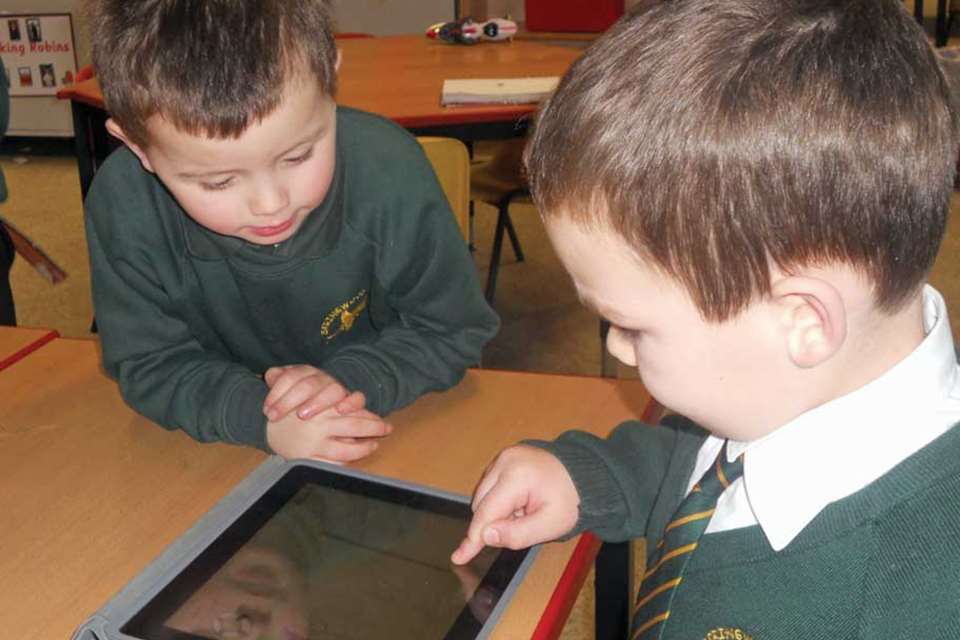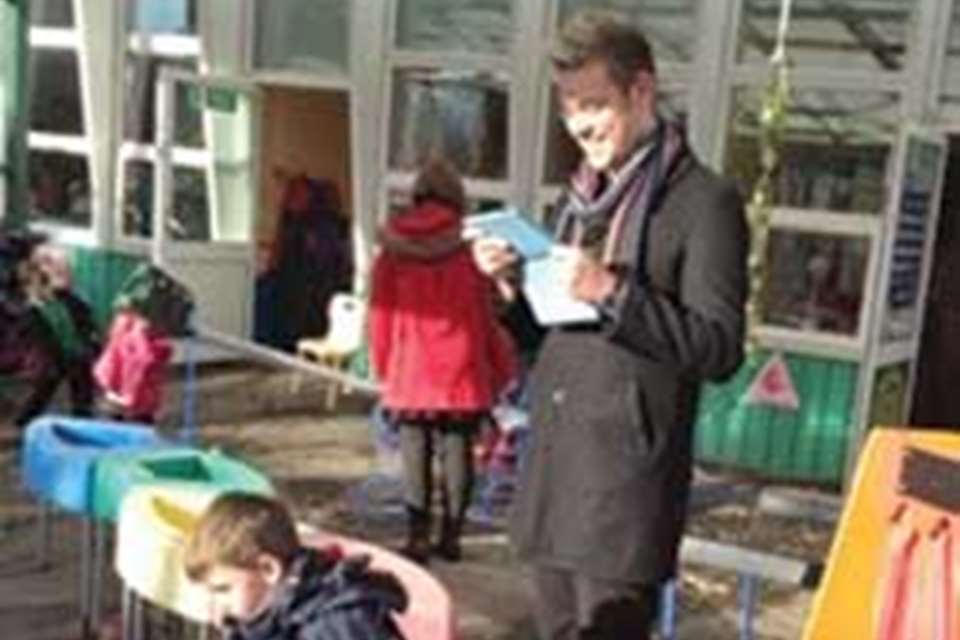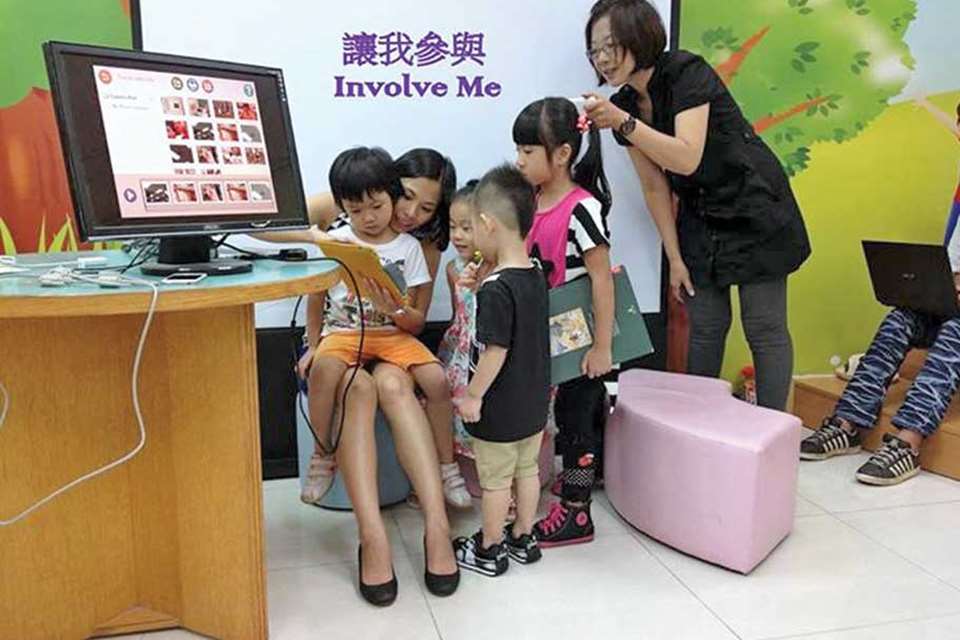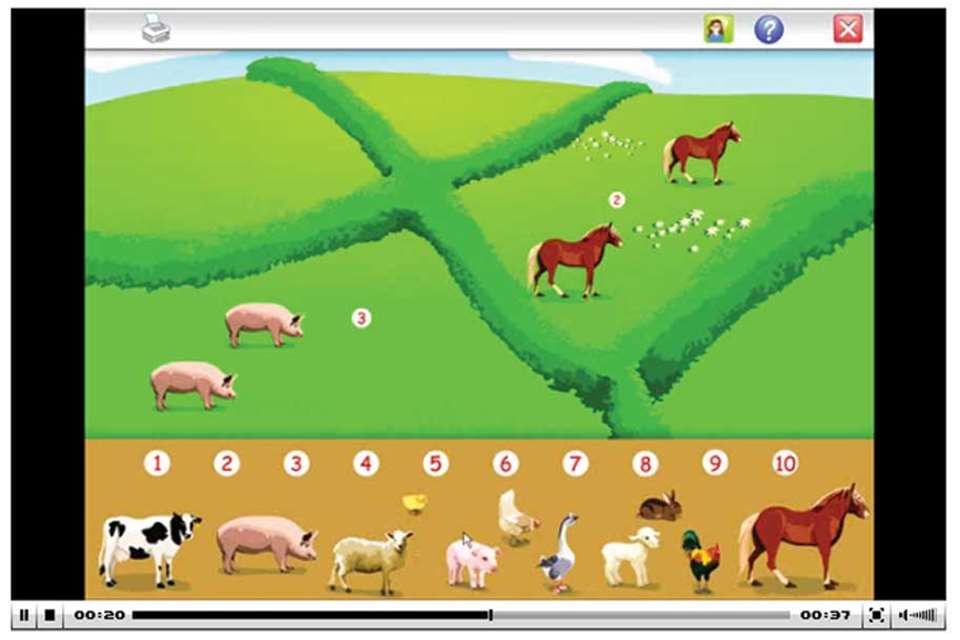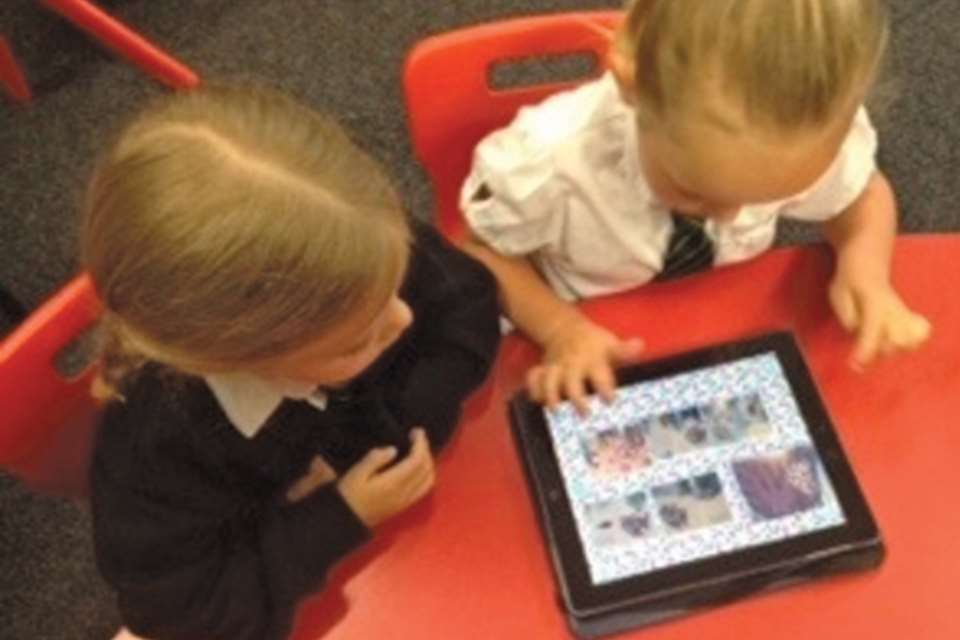Nursery Equipment: ICT - Supporting role
Nicole Weinstein
Wednesday, May 20, 2015
With technology playing an increasingly important part in all our lives, it is essential that the early years sector finds appropriate ways to incorporate ICT into settings. Nicole Weinstein finds inspiration at one nursery school using a variety of gadgets to both support and enhance learning.
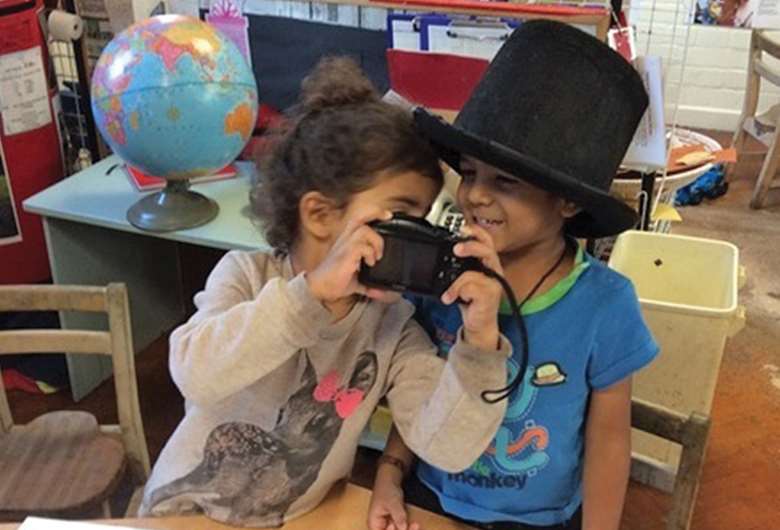
Today's young children are born into a world of digital technology. Cot mobiles revolve above babies' heads at bedtime; toy vehicles stop and start at the press of a button; a green man lights up at the pedestrian crossing; and mobile devices such as smartphones, tablets, iPads, iPods and iPod Touches have never been more widely accessible.
Lorraine Kaye, senior lecturer in primary computing at Middlesex University, says, 'Increased global connectivity and the use of the internet has greatly influenced the world in which young children live.
'Many young children are increasingly familiar with this technology and some are highly proficient in using smartphones and internet tablets by the time they enter nursery education.
'Their experiences with technology will have significant implications for their future lives. Therefore, it is vital that young children's experiences in early years education reflect the world in which they operate.'
HAMPDEN WAY NURSERY SCHOOL
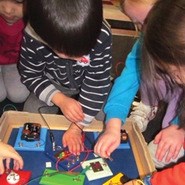 'No piece of ICT equipment is too precious' and 'every child has open access to all ICT resources at any time' is the philosophy of Hampden Way Nursery School, a maintained setting offering sessional and extended care to up to 100 children a day in Barnet, north west London.
'No piece of ICT equipment is too precious' and 'every child has open access to all ICT resources at any time' is the philosophy of Hampden Way Nursery School, a maintained setting offering sessional and extended care to up to 100 children a day in Barnet, north west London.
Head teacher Jodi McCallum explains, 'We offer a wide variety of ICT resources, from iPads to laptops, interactive whiteboards and many storytelling and musical resources. Two-year-olds arrive here with strong ICT skills.
'They have the language to support this and use words such as "search", "download" and "Facebook".
'For us to ignore this would be detrimental to children's learning of ICT. We believe that we would be doing them a disservice if we didn't offer this equipment because we wouldn't be able to give them experiences to extend what they already know.'
At first hand
I arrange to visit Hampden Way to see first hand the range of resources and experiences available to the children. When I arrive, I am greeted by the sound of Irish music gently flowing from overhead speakers in the Reception area. 'The music changes on a daily basis,' explains Ms McCallum. 'We have a wide selection of music from around the world, but this music is to celebrate Saint Patrick's Day.
'Music is a key part of our offering. The children love to dance and sing and our CD players, karaoke machine and microphones, as well as the music we play on the whiteboard, help them to enjoy moving to music and being creative when making their own.'
As I walk through the cloak area, a gathering of children are putting on their coats and wellies. A child asks me to help him. 'I want to play outside,' he explains. Another child presses a large yellow button discreetly stuck to the wall near the washbasins. 'Please remember to wash your hands,' the recording says.
This is just one of a number of sound buttons from Big Mack that are dotted around the setting, providing gentle reminders for children to hang their coats up or informing children of the Makaton sign of the week.
Play time
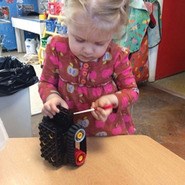 All the three- and four-year-olds have free-flow access to two large rooms that are adjoined by a small corridor and open onto the outdoor space. When I enter the first room, I immediately notice a large interactive whiteboard on the wall.
All the three- and four-year-olds have free-flow access to two large rooms that are adjoined by a small corridor and open onto the outdoor space. When I enter the first room, I immediately notice a large interactive whiteboard on the wall.
There is music coming from it and cartoon-style sea creatures are dancing in the ocean. Below it, there is a carpeted seated area with soft cushions. At a quick count, there are six children in this area and about 30 in the room. However, none of the children are watching the screen. It appears to be background noise.
Those around it are either playing with cars in a wooden garage, interacting with practitioners or reading books. After a while, a child approa- ches the touchscreen whiteboard and pauses it.
'The whiteboard isn't on all the time because we want children to play,' Ms McCallum explains. 'A child might request it or we may want them to show them something to extend their learning. For example, we recently watched the solar eclipse on live TV and we have a child who's fascinated with Egyptian mummies so we used it to show her pictures of Egypt and the pyramids.'
I'm amazed to see the hustle and bustle of the children purposefully going about their day and totally captivated by their environment. There is shopping to do in the home corner. Children are filling up bags with food and recycled containers, trolley in one hand and baby in the other. A credit card is handed over to the cashier to pay for the goods and she presses it into the wooden cash register to complete the transaction.
Ms McCallum comments, 'It's interesting that children often don't request toy money. Credit card transactions, when they go shopping with their parents, is just part of the world they live in.'
Another group of children are using magnifying glasses to hunt for bugs in an old tree stump that has been placed in a tuff spot.
One little boy goes to fetch a camera to take a picture of the earthworm he has found. There is a workshop area with tools for basic woodwork like hammers, nails and electronic glue guns.
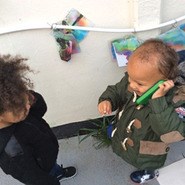 Around the room, Ms McCallum points out more pieces of ICT equipment. There are two CD players, a laptop that controls the whiteboard, four V-tech cameras and three Tuff-Cams and video recorders, electric glue guns, old telephones, microwaves, fax machines, computers, keyboards, TV controls, and mobile phones for role play, and a range of real cooking equipment such as microwaves, toasters, blenders and electric whisks, which are used for particular activities.
Around the room, Ms McCallum points out more pieces of ICT equipment. There are two CD players, a laptop that controls the whiteboard, four V-tech cameras and three Tuff-Cams and video recorders, electric glue guns, old telephones, microwaves, fax machines, computers, keyboards, TV controls, and mobile phones for role play, and a range of real cooking equipment such as microwaves, toasters, blenders and electric whisks, which are used for particular activities.
Screen time
As we move into the other room, which is less open-plan and has many more nooks and crannies, Ms McCallum points out a large open cupboard full of inviting, cosy cushions and drapes from floor to ceiling. It is dark inside and a group of children are shining torches onto the walls as they pretend they are on a camping trip.
Down some steps and we are in another part of the room where the bulk of the ICT equipment is on display. Interestingly, this room is the emptiest part of the building. Two children sit at the two laptops playing a game about dinosaurs. I am amazed that there are no children queuing up to use them or scrabbling over whose turn is next.
'It's so busy here and there's so much to do that we rarely have to introduce a timer to control children's usage,' Ms McCallum remarks. 'Also, it's part of the nursery experience and the children know that it will still be there the following day.
'We have a bank of computer games that children can access on the laptop at any time. When they start at the nursery, we do a lot of work on how to use the equipment appropriately and safely.
'We talk about it and there is always an adult modelling how to use it. We use a lot of language. For example, what the internet is, what it means and what sort of things you can get from the internet. Safety is paramount, so we have filters and blocks on everything and they can't access anything that isn't appropriate. But we still talk about safety and make parents aware of safe websites.
'If a child is spending too much time on the laptop, we use a timer and the adults are aware of the children that gravitate to this area.
'In the same way, we have strategies in place if the equipment is not being used appropriately. For example, the walkie-talkies are currently inaccessible on the top of the shelf because a few children have been throwing them in the sand.
'We do a lot of modelling and reiterate how to use equipment appropriately and explain that if the resources break, we can't replace them. Generally, the children know that the things are there and they use them appropriately.'
In the next few weeks, the children will get access to five new iPads, which they will be able to use independently in their play to photograph or video their creations and their interests.
The iPads will be in smash-proof cases so the children can transport them inside and outside in the nursery garden. Each core member of ten staff has an iPad that they use for observations and assessments. They are used throughout the day and link into the children's online profiles.
Show time
Although the area with the laptops is quiet now, last week it was a buzz of activity, Ms McCallum explains. 'A group of boys built themselves a stage next to the piano with building blocks. They each had a microphone, they put the One Direction CD on and they sang along to the music. It was entirely led by the boys.
'We also use the whiteboard for dancing and singing. There have been lots of budding Elsas from Disney's Frozen and when it was the Boom Chicka Boom dance craze, we found it on YouTube and the children loved to follow the sequences.'
There is a large cupboard full of shelves in the room that holds rechargeable torches, remote control cars, walkie-talkies, Bee-Bots, sound buttons for recording short messages, a karaoke machine, microphones, talking photo albums and CD players.
Supporting play
There is no doubt that the open-access approach to ICT works in this setting and it is heartening to see how well the children are using the resources to enhance their play, not replace it. It is clear that the laptops, the iPads and the interactive whiteboard are just a part of what is on offer for these children, and by no means the most important part.
As Ms McCallum concludes, 'Play is, and always will be, first and foremost. But ICT sits alongside it and supports it.
'It's about giving the children the skills, the understanding and the knowledge that they are going to have to use in the world they live in. If we're not supporting that learning at this level, I don't think we're doing them justice.'
EXPLORING ICT AND HOW IT WORKS
Taking apart old pieces of everyday ICT equipment to look at what is inside and how it works is a favourite activity for the children at Hampden Way Nursery School. They have studied the insides of old clocks, keyboards, computer boards, telephones, timers and CD players.
Ms McCallum says, 'We give them the tools to open up the items - screwdrivers, magnifying glasses and hammers - and they spend weeks taking them apart and looking at the components. The adults are there to support them, to give them the language and talk about why things work in a particular way - for example, how the fan inside the computer spins around to help it cool down.
'On one occasion the children used the components to build their own computers. They used recycled materials - boxes, cardboard and plastic - and taped the plugs, the wires, the circuit board and the fan to them, added keyboards, and recorded messages on the sound buttons to role play that the computer was speaking to them.
'They wanted to send messages to each other so they sat at different ends of the room and joined the computers together with a lead and wires so they would be able to send the messages to each other. There was lots of language around - "This is the button to turn it on and off but it turns off automatically because it goes into sleep mode."'
This activity is a recurring theme because children are fascinated with how things work. Ms McCallum adds, 'They know you have to plug something in and turn it on - they get that - but they don't understand how things like pictures appear on the screen. Some of them thought that the pictures were hiding inside and when you press a button the pictures just come. So when we took the computer apart they could see that there weren't any physical pictures inside but there were lots of things inside that would help the messages go somewhere.'
ICT RESOURCES: BEST BUYS
Smart boards (from £1,079) from Primary ICT
Promethean interactive whiteboards (see website in 'More information')
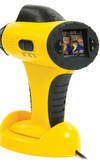 Digital cameras - VTech Kidizoom Twist Plus, Blue (£49.99) from Argos; Tuff-Cam 2 - Child-Friendly Digital Camera and Movie Camera (£79.95) from TTS Group; and Nikon 16.1MP Camera (£81.95) from Hope Education.
Digital cameras - VTech Kidizoom Twist Plus, Blue (£49.99) from Argos; Tuff-Cam 2 - Child-Friendly Digital Camera and Movie Camera (£79.95) from TTS Group; and Nikon 16.1MP Camera (£81.95) from Hope Education.
Digital microscopes - Digital Blue QX7 (£99.99) from Digital Blue; Digital Camera Microscope (£88.25) from Hope Education; and the Reflections on Learning LCD Microscope with Screen (£79.99).
Walkie-talkies - models include Mini Mobile Phones (£109.95 for six) from TTS Group; Cobra MT975 Two Way Radios (£64.95 for a pair), from Hope Education; Walkie-Talkies (£32.95 for a pair), from YPO.
Programmable toys - Rechargeable Bee Bot (£49.95) from YPO; Bee-Bot Class Pack and Dock Station (£274) from Reflections on Learning; Early Years Roamer (£95) from Primary ICT.
Big Mack (£89) from Inclusive Technology - this recorder provides a simple introduction to sound recording technology
Voice recorders - see Talk Time Postcards (£11.99); Talking Photo Album, A5, A4 and A3 versions (from £24.95); Big Point, six large buttons that can record up to 30 seconds of sound or speech (£44.95). All TTS.
Talking-Point, which records and plays back ten or 30 seconds of sound (from £29.95 for six) from TTS.
Easy Karaoke EK212 Karaoke Machine with Lights (£69.99) from Argos.
Griffin Survivor Military-Duty Case for iPad 2, iPad 3 and iPad 4 (£40), from Tesco.
StoryPhones Headsets are individual MP3 players with a rechargeable battery, allowing children to listen to stories and songs, indoors and outside (from £82.50 for a Personal MP3 Headset with 2GB memory).
 Easi range, from TTS, includes Easi-Cars, set of four rechargeable cars (£109.95); Easi-Detectors, set of four rechargeable metal detectors (£109.95); Easi-Torch, six rechargeable torches (£54.95); Easi-Speak MP3 Recorder/Player (£29.95); and Easi-Ears - Digital Audio System (£399.95), which enables teachers to put their own audio content onto the wireless headphones.
Easi range, from TTS, includes Easi-Cars, set of four rechargeable cars (£109.95); Easi-Detectors, set of four rechargeable metal detectors (£109.95); Easi-Torch, six rechargeable torches (£54.95); Easi-Speak MP3 Recorder/Player (£29.95); and Easi-Ears - Digital Audio System (£399.95), which enables teachers to put their own audio content onto the wireless headphones.
Digital Notice Boards from Digital Nursery are an effective way of communicating with parents (£2,950).
MORE INFORMATION
- Argos, www.argos.co.uk
- Digital Blue, www.digitalblue.org.uk
- Digital Nursery, www.digitalnursery.co.uk
- Hope Education, www.hope-education.co.uk
- Inclusive Technology, www.inclusive.co.uk
- Primary ICT, www.primaryict.co.uk
- Promethean, www.prometheanworld.com
- Reflections on Learning, www.reflectionsonlearning.co.uk
- Storyphones, www.storyphones.co.uk
- Tesco, www.tesco.com
- TTS Group, www.tts-group.co.uk
- YPO, www.ypo.co.uk.


